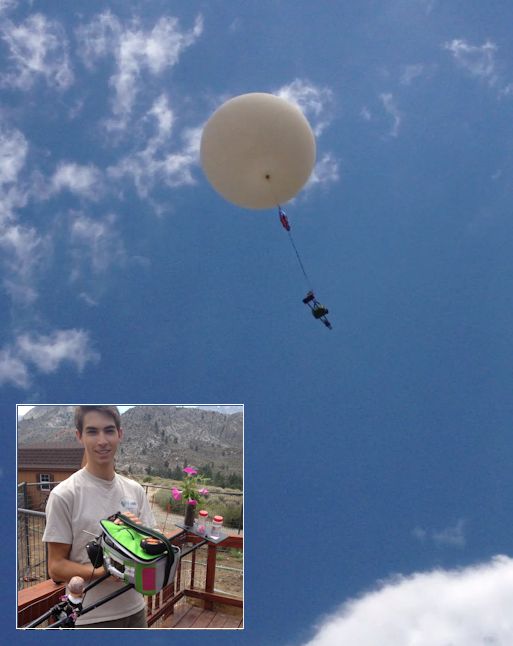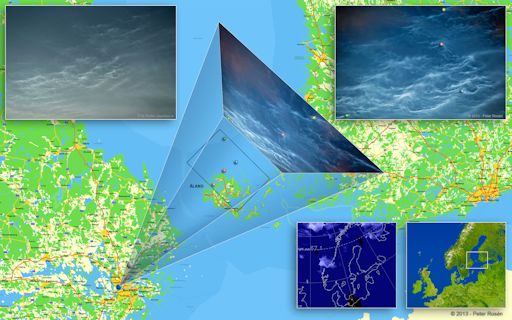They came from outer space--and you can have one! Genuine meteorites are now on sale in the Space Weather Store. | | |
SOLAR WIND: A stream of high-speed solar wind is blowing past Earth. So far, however, the low-density stream is doing little to spark geomagnetic storms. Bright auroras do not appear to be in the offing. Aurora alerts: text, voice.
WAVING AT SATURN FROM THE EDGE OF SPACE: Right now, a suborbital helium balloon is in the stratosphere on a mission to wave at Saturn. The students of Earth to Sky Calculus launched the balloon at 1:52 pm PDT, just in time to reach the apex of its flight while Cassini was photographing Earth through Saturn's rings. Here is a picture of the balloon moments after launch:

The payload contained four scientific experiments, a vase of Petunias, a copy of the Hitchhikers Guide to the Galaxy, and a Galileo Bobblehead. The items on board were selected competitively from more than 1056 entries suggested by Spaceweather.com readers. First place winners of the competition received free telescopes from Explore Scientific.
Cassini's cameras were trained on Earth during a 15 minute interval that began at 2:27 p.m. PDT (5:27 p.m. EDT or 21:27 UTC). Cameras onboard the balloon were filming the sky during that time, so right back atcha Cassini! Stay tuned for updates about the balloon's flight and the recovery of its payload.
Realtime Space Weather Photo Gallery
HOW HIGH ARE NOCTILUCENT CLOUDS? Noctilucent clouds are our planet's highest clouds--but exactly how high are they? The textbook answer is 82-82 km, but textbooks can be wrong. Peter Rosén of Stockholm, Sweden, decided to find out for himself. "On July 4th I photographed some interesting NLCs," he explains. "After uploading them on Spaceweather, I noticed that P-M Hedén had photographed the same formations and at the same time from a location 26 km (16 miles) north of mine. I decided to make precise measurements of the same features in both pictures with respect to the stars and try to determine the exact geographical position and height of these NLCs." Scroll past the images to learn more:

"Some years ago I found a very useful calculator put online by Paul Schlyter to measure the position and altitude of Perseid meteors. By entering the geographical position of both observers and the respective coordinates of an object in the sky, it will compute the position and altitude of the object. In this case, I used it for NLCs."
He picked four features color-coded in the figure above (best seen in the full-sized version) and measured their positions. "The height of these NLCs ranged from 75.1 km (blue dot) to 78.6 km (red dot)," he says. "These results seem to be a little bit lower than the value of 83 km that is often referenced."
Realtime Noctilucent Cloud Photo Gallery
[previous years: 2003, 2004, 2005, 2006, 2007, 2008, 2009, 2011]
Realtime Aurora Photo Gallery
Realtime Comet Photo Gallery

